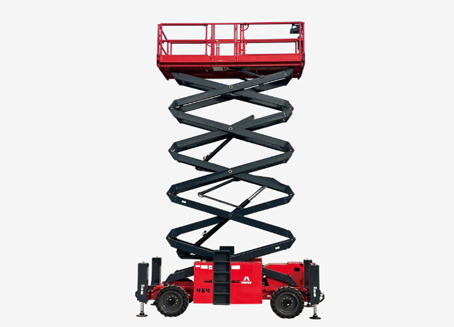The Ingenious Self-Leveling Mechanism of Rough Terrain Scissor Lifts
In the realm of construction and industrial work, efficiency and safety are of paramount importance. One remarkable piece of machinery that embodies these qualities is the rough terrain scissor lift. These versatile lifts are designed to navigate challenging outdoor environments while providing a stable platform for workers to perform tasks at elevated heights. One crucial aspect that contributes to their reliability and usability is the self-leveling mechanism. In this detailed exploration, we delve into the intricacies of self-leveling rough terrain scissor lifts, understanding how they work, their benefits, and their impact on modern worksites.
Understanding Self-Leveling Mechanism
A self-leveling rough terrain scissor lift is equipped with a sophisticated system that automatically maintains the platform's horizontal orientation, regardless of the surface's incline. This mechanism ensures that the platform remains steady and balanced, enhancing worker safety and operational efficiency. The self-leveling feature becomes particularly important when working on uneven terrains, as it eliminates the need for manual adjustments to maintain stability.
Components of the Self-Leveling Mechanism
The self-leveling mechanism in a rough terrain scissor lift involves several components that work in harmony to provide a secure and level platform:
1. Sensors: These sensors detect any variation in the platform's angle in relation to the ground. They gather real-time data on the lift's position and orientation.
2. Hydraulic System: The hydraulic system acts as the driving force to adjust the lift's position. When the sensors detect a deviation from the desired level, the hydraulic system is activated to make the necessary adjustments.
3. Control System: The control system interprets the data collected by the sensors and commands the hydraulic system to act accordingly. It ensures that the lift's platform remains parallel to the ground, even on uneven surfaces.
4. Platform Frame: The platform frame, which houses the working area, is connected to the hydraulic system. It moves in response to the adjustments made by the hydraulic components to maintain a level working surface.
How the Mechanism Works
When a self-leveling rough terrain scissor lift is placed on an uneven surface, the sensors detect any tilt or incline. The control system processes this information and sends signals to the hydraulic system to extend or retract specific hydraulic cylinders. These adjustments raise or lower the respective corners of the platform, effectively countering the unevenness of the ground. As a result, the platform remains level, allowing workers to carry out tasks safely and efficiently.
Benefits of Self-Leveling Mechanism
The inclusion of a self-leveling mechanism in rough terrain scissor lifts offers a multitude of benefits that significantly enhance the operation of these machines:
Enhanced Safety
Worker safety is a primary concern in any elevated work scenario. The self-leveling mechanism reduces the risk of platform instability and tipping, providing a secure working environment even on challenging terrains.
Operational Efficiency
The automatic self-leveling feature eliminates the need for manual adjustments, saving time and effort for operators. This increased efficiency translates to higher productivity on the worksite.
Reduced Fatigue
Operators no longer need to constantly monitor and adjust the platform's level, which can be physically demanding and mentally taxing. The self-leveling mechanism reduces operator fatigue, allowing them to focus on the task at hand.
Versatility
The self-leveling feature enhances the versatility of rough terrain scissor lifts. These lifts can be deployed on a wider range of terrains, making them suitable for various industries and projects.
The Evolution of Worksites
Self-leveling mechanisms have revolutionized how rough terrain scissor lifts are utilized in modern worksites. They provide a solution to the challenges posed by uneven terrains, ensuring that workers can perform tasks at height without compromising on safety or efficiency. These mechanisms not only simplify the operation of the lifts but also contribute to the overall success of projects across industries.
In Conclusion
The self-leveling mechanism is a testament to the innovation driving the construction and industrial equipment industry. Rough terrain scissor lifts equipped with this feature not only showcase the advancement of technology but also prioritize worker well-being and operational excellence. As worksites continue to evolve, these self-leveling lifts stand as a vital tool in ensuring safe and efficient elevated work tasks.






